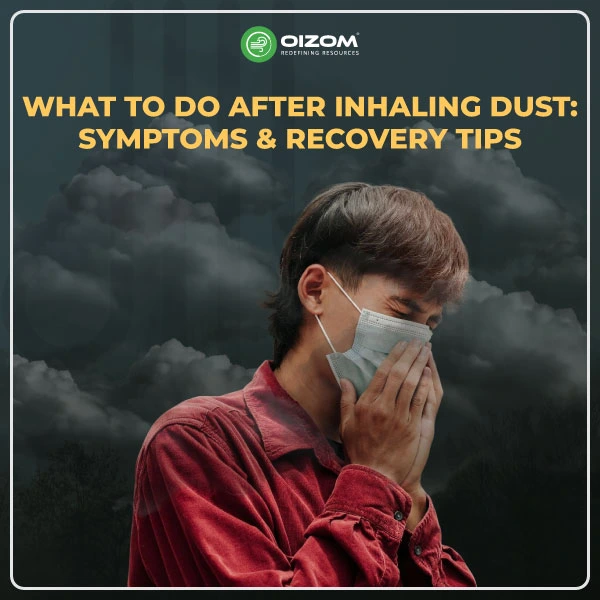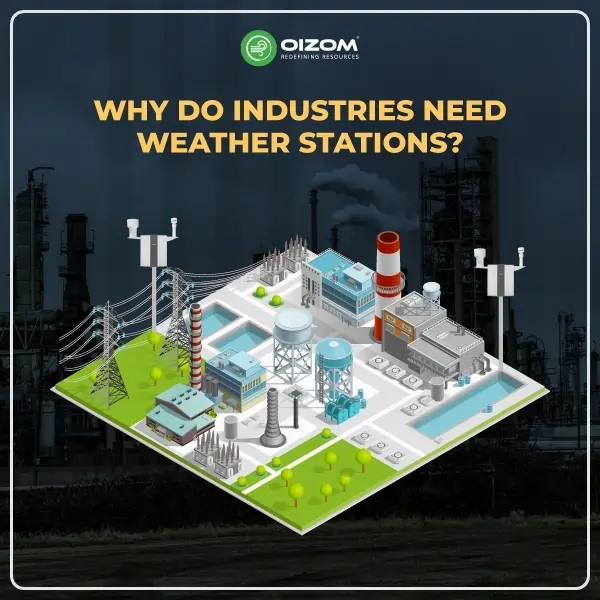Summary
Dust might not seem dangerous, but it has silently emerged as a threat that surrounds us. This blog explores the often unseen health dangers of dust exposure, especially from fine particulate matter like PM2.5 and PM10, which can deeply settle in the lungs and affect everything from our breathing to our brain and even skin health.
We will also walk through the symptoms of excessive dust inhalation, including signs like chest pain, breathing trouble, or persistent coughing and what to do if they occur. We’ll also go through the immediate actions to be taken after dust exposure: moving to fresh air, changing clothes, rinsing eyes and nose, staying hydrated, and monitoring symptoms. As well as natural ways to support lung recovery, like deep breathing exercises to steam therapy and antioxidant-rich diets.
The blog also highlights long-term precautions, like using HEPA air purifiers, maintaining a clean indoor environment, and wearing proper masks while outdoors. We dive into the importance of staying aware of air quality levels and taking steps to avoid dust-heavy environments.
Finally, we will look at the role of real-time air quality monitoring in dust control, especially for industries. With advanced systems like Oizom’s Dustroid, companies can identify point sources, act faster with automated alerts, and bridge training gaps all while ensuring regulatory compliance and safeguarding worker health.
Introduction
Have you ever felt suffocated while on your morning jog? Or while walking through a busy street in or a dusty construction zone, did you feel that scratch in your throat? This has become a common occurrence nowadays.
Dust isn’t just a nuisance anymore; it’s a real health threat. From indoor dust particles to industrial pollutants, what you breathe can affect far more than just your lungs. In fact, prolonged exposure to fine particulate matter (like PM2.5) is linked to asthma and other cognitive issues.
This blog gives an in-depth explanation of what really happens when you inhale dust, the symptoms to watch out for, when it’s time to seek medical help, and simple steps one can take right away to protect your health. Whether you work in a dusty environment or are just trying to stay safe during a pollution surge, the tips here are for you.
Is Inhaling Dust Dangerous?
To put it plainly, yes, and more than most people realize. Dust inhalation doesn’t just cause an irritation, it can deeply harm the lungs, brain, and even your skin. Finer particles (like PM2.5 and PM10) are small enough to pass natural defenses and settle deep in the lungs. Where they can trigger shortness of breath, worsen asthma, and lead to chronic diseases like COPD. Some types of dust, such as asbestos or crystalline silica, are even classified as carcinogenic.
Once inhaled, the dust (specially finer particles like PM2.5) enters the bloodstream and reaches other vital organs. Research suggests that long-term exposure to fine dust may reduce life expectancy by up to 8.6 months. Dust can also impact brain health. Studies have shown links between PM2.5 exposure and dementia or Alzheimer’s disease.
Even skin whose large surface area is exposed to airborne particles is impacted. Prolonged contact can cause itching, allergic reactions, or even skin cancer, especially when working around metal or chemical-laden dust.
Symptoms Of Too Much Dust Inhalation
Dust exposure can show varied symptoms, from mild irritation to serious respiratory issues. Too much dust inhalation can cause one or many difficulties as listed below:.
1. Difficulty Breathing
Shortness of breath, chest tightness, wheezing, or choking sensation are early signs of lung reaction to inhaled dust. This can indicate airway swelling or inflammation and should be treated as an emergency.
2. Severe Chest Pain
Sharp or persistent chest pain could signal lung irritation or inflammation, and in some cases, even a collapsed lung. This requires urgent care.
3. Blue-Tinged Skin or Lips
Bluish skin, lips, or fingertips may indicate very low oxygen levels in the blood, a clear sign of respiratory distress or possible respiratory failure.
4. Dizziness or Fainting
These symptoms may indicate your brain isn’t receiving enough oxygen. This is a serious concern and requires immediate medical assistance.
5. Coughing Up Blood
Persistent coughing is common after dust exposure, but if it’s accompanied by blood, it could indicate internal lung damage.
6. Fever or Allergic Reactions
If you’re experiencing symptoms similar to hay fever, itchy eyes, runny nose, sore throat or fever with uncertain cause, you may have developed rhinitis or another immune response due to dust exposure.
7. Worsening Symptoms Over Time
Even if symptoms start off mild, increasing difficulty in breathing, chest discomfort, or fatigue signals that your condition is deteriorating.

What to Do After Inhaling Dust?
After inhaling dust, move to fresh air right away, remove contaminated clothing, rinse your eyes and nose, drink water, and monitor your symptoms. Seek medical help if breathing issues, chest pain, or dizziness persist.
Let’s look at each of these steps in more detail:
Immediate Actions After Exposure
Knowing what to do immediately after dust exposure may help to manage hazards and ensure a quick return to comfort and safety.
Move to Fresh Air
If you are at work, get some fresh air and relax in tight clothing to hеlp you brеathе. Ensurе your coworkеrs know what has occurrеd so that someone can assist you in thе evеnt of your collapse. This will prevent further dust inhalation and allow your lungs to begin cleaning immediately.
Remove any Contaminated Clothing
Aftеr rеaching a safе arеa, your nеxt priority is to dеcontaminatе. Rеmovе any clothing that has comе into contact with thе dust. Do this carefully to avoid stirring thе dust back into thе air. Placе thе clothing in a sеalеd bag and wash it sеparatеly if possible. If your skin has been exposed, gеntly clеan it with a damp cloth or showеr to wash away dust particlеs.
Rinse Your Eyes and Nose
Dust can irritate sensitive areas like your eyes and nose. Rinse your eyes with clean, lukewarm water for a few minutes to alleviate discomfort. Inhaling dust particles can frequently become lodged in your nasal passages. Blowing your nose regularly can assist in eliminating these particles. Cover your nostrils with a tissue and softly blow to dislodge the dust. Avoid blowing too hard or forcefully, as this can harm your nasal passages. Blowing your nose frequently after dust contact is essential, but avoiding doing so excessively to minimize irritation. Moreover, a saline nasal spray or a gentle rinse with a Neti pot can help clear out the dust if your nose is affected.
Drink Plenty of Water
Keeping hydrated can help your body detoxify, especially in the lungs. Drinking plenty of fluids, particularly water, aids in the thinned mucus in your lungs. This allows your body to evacuate the mucus and any trapped dust particles, allowing for cleaner breathing. Hydration also promotes general immune system function, which is vital in preventing diseases caused by dust inhalation.
For more acute cases, sometimes drinking green tea helps by reinforcing cells in your lungs. It can reduce the irritation of your lungs if you are only experiencing mild symptoms.
Monitor Your Symptoms
If symptoms like coughing, wheezing, shortness of breath, or chest tightness continue after inhaling dust, get medical attention. These symptoms could signal that your lungs are not recovering correctly or that there is an underlying issue, such as a respiratory infection or disease.
How to Get Dust Out of Lungs Naturally?
If you’re feeling uncomfortable after breathing in dust, use these efficient methods to help clear your lungs. While medical help is crucial for severe symptoms, the following natural methods can support lung self-cleaning and help ease discomfort in mild cases:
- Hydration – Your body will more easily eliminate dust particles when you drink a lot of water because it thins mucus.
- Deep Breathing Exercises – Techniques such as diaphragmatic breathing will help eliminate dust and enhance lung function.
- Coughing Techniques – You can clear your airways of irritants by coughing in a controlled manner.
- Physical Activity – Exercise can help remove dust particles from the lungs and boost lung capacity.
- Steam Therapy – Breathing in steam can help you expel stored dust by releasing mucus in your lungs.
- Healthy Diet – Eating foods high in antioxidants can aid in lung healing and function.
How To Avoid Inhaling Harmful Dust?
The effects of dust inhalation aren’t limited to immediate reactions; their effects might last for a long time, necessitating long-term vigilance and proactive measures. Implementing strategies to reduce future dust exposure and maintain excellent respiratory health is critical to avoiding long-term consequences. Preventing dust inhalation is far easier than treating its effects. Whether indoors or outside, taking consistent steps to reduce exposure can protect your lungs and overall health.
Here are some simple but effective ways to avoid harmful dust:
- Air Filtration: Invеst in high-quality air purifiеrs, prеfеrably with HEPA filtеrs, for your homе and workplacе. It can effectively remove a wide range of pollutants from the air, including dust particles. These devices filter the air, capturing dust and other allergens and returning a cleaner atmosphere to your home.
- Dust Control Practicеs: Implеmеnt routinе clеaning mеthods that rеducе dust accumulation. Rеgular vacuuming, mopping, and wiping surfacеs with damp cloths can significantly decrease dust lеvеls. Frеquеntly wash bеdding, curtains, and upholstеry to еliminatе dust mitеs.
- Pеrsonal Protеctivе Equipmеnt: Respiratory masks are the best mask option because they have air filters built into them. In dusty еnvironmеnts, war certified masks and protective eyewear. N95 masks arе suitablе for high dust еxposurе, while surgical masks can be sufficient for modеratе lеvеls. These filters are designed to protect you from as much dust as possible. But some dust particles can still manage, at times, to get through the barriers.
- Outdoor Awarеnеss: Stay informed about air quality, еspеcially during periods of high pollution. Limit outdoor activities whеn dust lеvеls pеak and consider wearing a mask during such timеs.
- Allergen Avoidance: For thosе with allеrgiеs, identifying and avoiding specific dust triggеrs is crucial. Regular allergy tеsting can hеlp tailor avoidance strategies.
- Naturе Thеrapy: Spеnding timе in natural, clean environments can rejuvenate your lungs, offеring a brеak from urban dust pollution.
Role Of Air Quality Monitoring In Dust Control
In industries like construction, mining, and manufacturing, dust is a major environmental and health hazard. Yet many industries still use outdated, reactive approaches for dust control, often dismissing the actual sources.
That’s where real-time air quality monitoring from Oizom Instruments makes a difference.
By implementing smart monitoring systems like Oizom’s Dustroid, industries can:
- Identify point sources of dust emissions: It helps in pinpointing exact locations and activities causing PM spikes.
- Act faster with automated alerts: Operators can immediately start dust suppression or apply control measures the moment levels exceed thresholds.
- Bridge training and awareness gaps: Teams often lack technical training in dust control. Simplified visual data from Oizom’s platform helps communicate patterns clearly and build accountability across shifts.
With the ability to monitor multiple particulate sizes (PM1, PM2.5, PM10, PM100) in ambient air, Oizom’s monitoring solutions provide actionable insights that support environmental compliance, safer working conditions, and better community impact.
If your site still relies on monthly lab reports or manual logs, it’s time to shift to real-time, data-driven dust control with Oizom.
Conclusion
Dust may appear insignificant, but it is a possible hazard that requires attention and care. Thanks to the knowledge and preventive techniques we’ve discussed, you are better prepared to deal with dust exposure and protect your long-term respiratory health. Remember that simple measures such as using air purifiers and air monitoring devices like the Oizom dust monitoring system, which offers real-time accurate data, can help to maintain healthy living choices, and advocating for environmental cleanliness is critical in protecting your lungs and those of others around you. Also, taking immediate steps after inhaling dust is essential, but long-term awareness of the harmful effects of dust is equally important for protecting your health. important for protecting your health.
FAQs
Coughing and throat irritation are examples of mild symptoms that often go away in a few hours to a day.
But if you have asthma or allergies, your symptoms will be more severe and need medical attention.
Clearing the respiratory system and lowering inflammation can be achieved by inhaling steam, drinking warm water, using a humidifier, and mixing honey with warm tea.
Yes, Dust inhalation will irritate the throat, resulting in dryness, discomfort and a scratchy sensation.
Using throat lozenges, gargling with salt water, and consuming warm liquids can all help ease discomfort.






